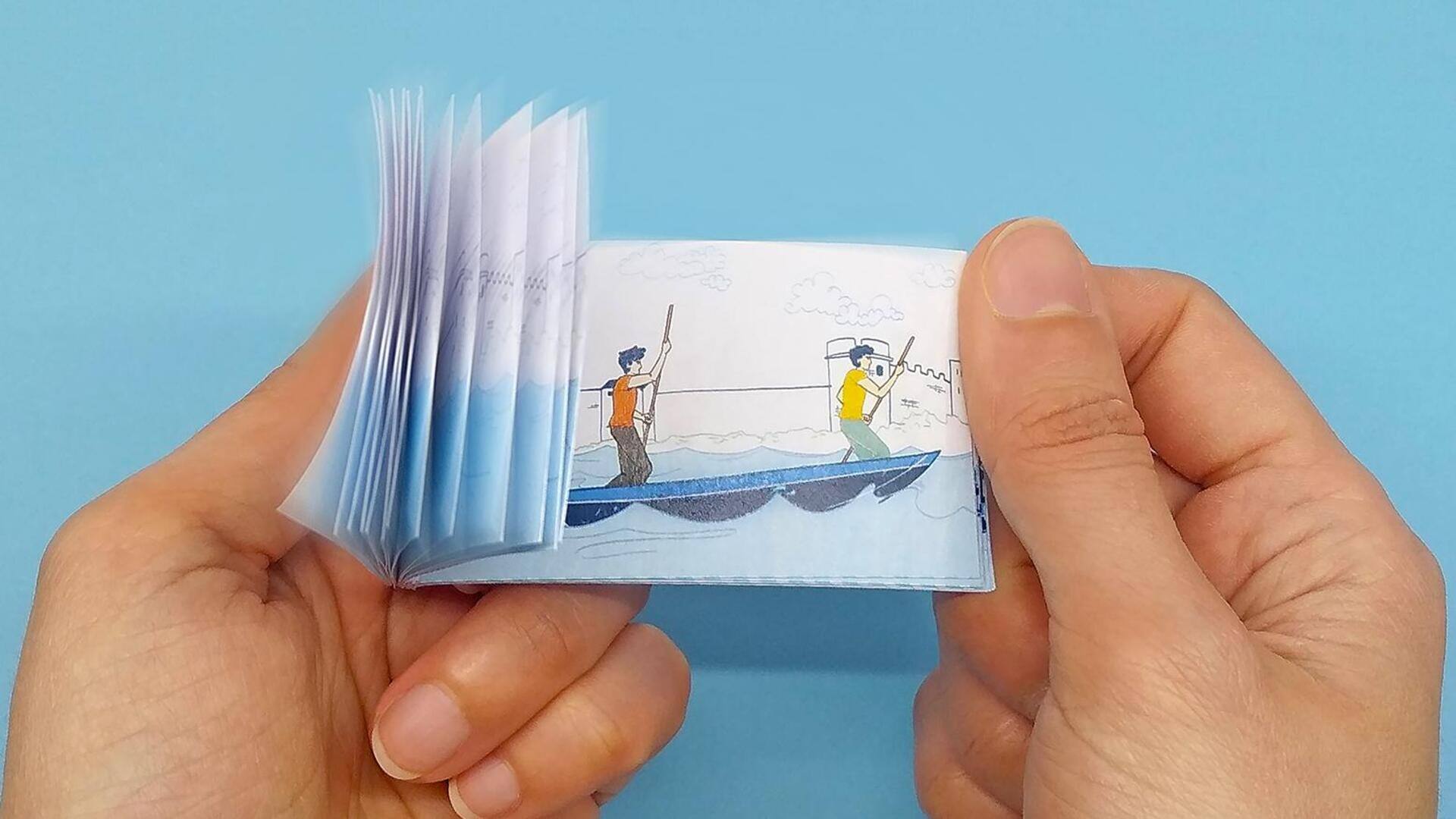
Crafting visual narratives with flipbook animation
What's the story
Flipbook animation is a magical storytelling medium, bringing images to life with the simple flip of a page. This art form, combining drawing and storytelling, is not only for artists but also for enthusiasts. It's a classic animation technique that has fascinated generations, providing a tactile and interactive experience that stands apart from digital formats.
Basics
Understanding the basics of flipbook animation
Flipbook animation works by creating a series of drawings, each with a slight difference from the previous one. It's best for beginners to start with simple shapes and movements to grasp the fundamentals. Maintaining consistency in size and position across frames is key to achieving smooth animation. You can create complex narratives as you get better.
Tools
Tools and materials you need
To begin your flipbook animation, gather your materials: paper, pencils, eraser, and a binding method (staples or clips). Opt for heavy-weight paper to withstand repeated flipping. Pencils and an eraser enable you to make adjustments, perfecting your drawings. Binding is crucial; staples or bulldog clips ensure your flipbook remains secure as you enjoy the animations.
Storyline
Planning your storyline
Before you start sketching, plan your story. Begin by brainstorming ideas and creating a storyboard—a rough sketch of how your story progresses across different frames. This will ensure your story has a clear beginning, middle, and end. Plus, it will help you pinpoint the key frames that need more detail or emphasis. Remember, simplicity is key. Simple stories are often the most effective ones for flipbook animations.
Techniques
Drawing techniques for enhanced motion
The secret to fluid motion in flipbook animations lies in mastering classic drawing techniques, such as "squash and stretch." This principle infuses energy by distorting forms during movement—think squishing a ball at impact or stretching it out as it zips away. "Anticipation" is another crucial tool. It's like a small wind-up in the opposite direction before the main action, adding oomph to movements like throwing a punch.
Polishing
Tips for polishing your flipbook animation
Once you've completed your drawings, go back and fine-tune each page. Adjust the timing by adding or removing frames, and make sure everything flows smoothly. Keep your workspace bright so you can see all the details. And, last but not the least, share your work! Getting feedback from others can help you improve your flipbook animation a lot.